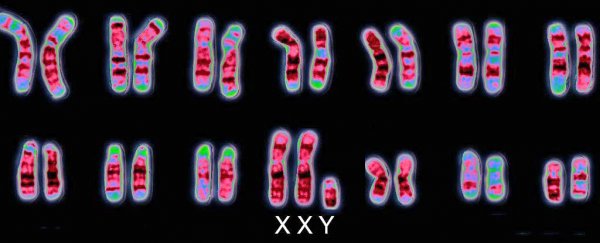The Trump administration is considering establishing a legal definition of sex as an unchangeable quality based on a person's genitals at birth, according to a report published Sunday by the New York Times.
The Department of Health and Human Services (HHS) is seeking to establish this definition under Title IX, the civil rights law that bans discrimination on the basis of sex in education programs that receive federal funding, the Times reported.
In a draft memo obtained by the Times, the HHS argued that the government should adopt a definition of sex based, "on a biological basis that is clear, grounded in science, objective and administrable."
"The agency's proposed definition would define sex as either male or female, unchangeable, and determined by the genitals that a person is born with … Any dispute about one's sex would have to be clarified using genetic testing," the Times report said.
The New York Times report characterized the proposal as an attempt to define gender, too. Defining sex as "unchangeable" could also imply that a person's gender expression should match their sex that was assigned upon birth.
The proposed definition prompted outrage in the LGBTQ community.
It also sparked concerns that such a narrow definition of sex may exclude transgender people - who choose a gender identity different than the sex they were assigned at birth - from federal non-discrimination protections.
An HHS official called the Times report "misleading" but declined to comment on the "alleged, leaked documents" on Monday, according to STAT News.
HHS did not immediately respond to INSIDER's request for comment.
Aside from its legal and political implications, the proposed definition of sex also doesn't line up with biological realities, as some researchers and doctors have pointed out in the days since the New York Times report.
Here's a closer look at why.
Not every human being fits into a neat male-female binary when they're born
Both male and female sex organs start out from the same tissue, according to the Mayo Clinic. Whether an infant ends up with male or female sex organs depends on both sex chromosomes and on the presence (or lack) of male hormones.
Genetically female infants have two X chromosomes, while genetically male infants have one X and one Y chromosome.
During gestation, the Y chromosome prompts the growth of testicles, leading to the production of male hormones and the development of male genitals, the Mayo Clinic explains. Fetuses that don't have a Y chromosome develop female genitals.
But not every infant ends up neatly in one category or the other. Some fall into a category known as "intersex".
"'Intersex' is a term to describe people who have genitalia that's not exactly female and not exactly male," Meera Shah, a family medicine physician specializing in gender affirming care, and a Fellow with Physicians for Reproductive Health, told INSIDER.
Up to 1.7 percent of babies are born with sex characteristics that aren't typically male or typically female, making being intersex almost as common as having red hair, according to the United Nations.
There are a number of reasons why this may happen.
A group of conditions known as "intersex conditions" can lead to atypical development of physical sex characteristics, according to the American Psychological Association (APA).
These conditions may involve the genitals, reproductive organs, X and Y chromosomes, or sex-related hormones. One example is Klinefelter syndrome, in which males are born with an extra X chromosome.
Another is Androgen Insensitivity Syndrome, in which a person is born with an X and Y chromosome but is resistant to male hormones. (As a result, the person develops some or all physical traits of a woman but remains genetically male.)
Another is congenital adrenal hyperplasia, in which an overproduction of hormones causes masculinization of female genitals.
There are more intersex conditions besides these, but the ultimate point is still the same: not all infants have strictly male or female physical characteristics or strictly male or female sex chromosomes.
"The Trump administration can't just wave a wand and negate decades of medical science and court decisions," Sean Cahill, director of health policy research at The Fenway Institute, a renowned hub for LGBTQ health research, told INSIDER.
"Most people fall into the male-female binary but not all people. Transgender people exist, intersex people exist."
Transgender people don't identify with the sex they were assigned at birth
Legally defining sex as unchangeable at birth may also further stigmatize transgender people, whose gender identity does not conform to the sex they were assigned when they were born.
"We think this policy is problematic because it really negates the identity of a significant group of people," Cahill said.
An estimated 1.4 million people in the US are transgender, according to the Williams Institute.
While sex is associated with physical attributes like anatomy, gender "refers to the socially constructed roles, behaviors, activities, and attributes that a given society considers appropriate for boys and men or girls and women," according to the APA.
The two don't match up in every individual.
"Medical science has recognized for decades that, for transgender people, birth sex does not match current gender identity. There is a difference between gender identity and birth sex," Cahill said.
Shah stressed that a person's gender is self-determined.
"It's not up to a politician, it's not up to a doctor, it's not up to a parent. It's up to the individual. That's really the core of the matter here," she said.
"I want transgender and gender diverse people to know that the medical community stands by them. And we as physicians as scientists know what the definition of gender is and we will stick to that."
This article was originally published by Business Insider.
More from Business Insider:
